When a well gives you water, make soap
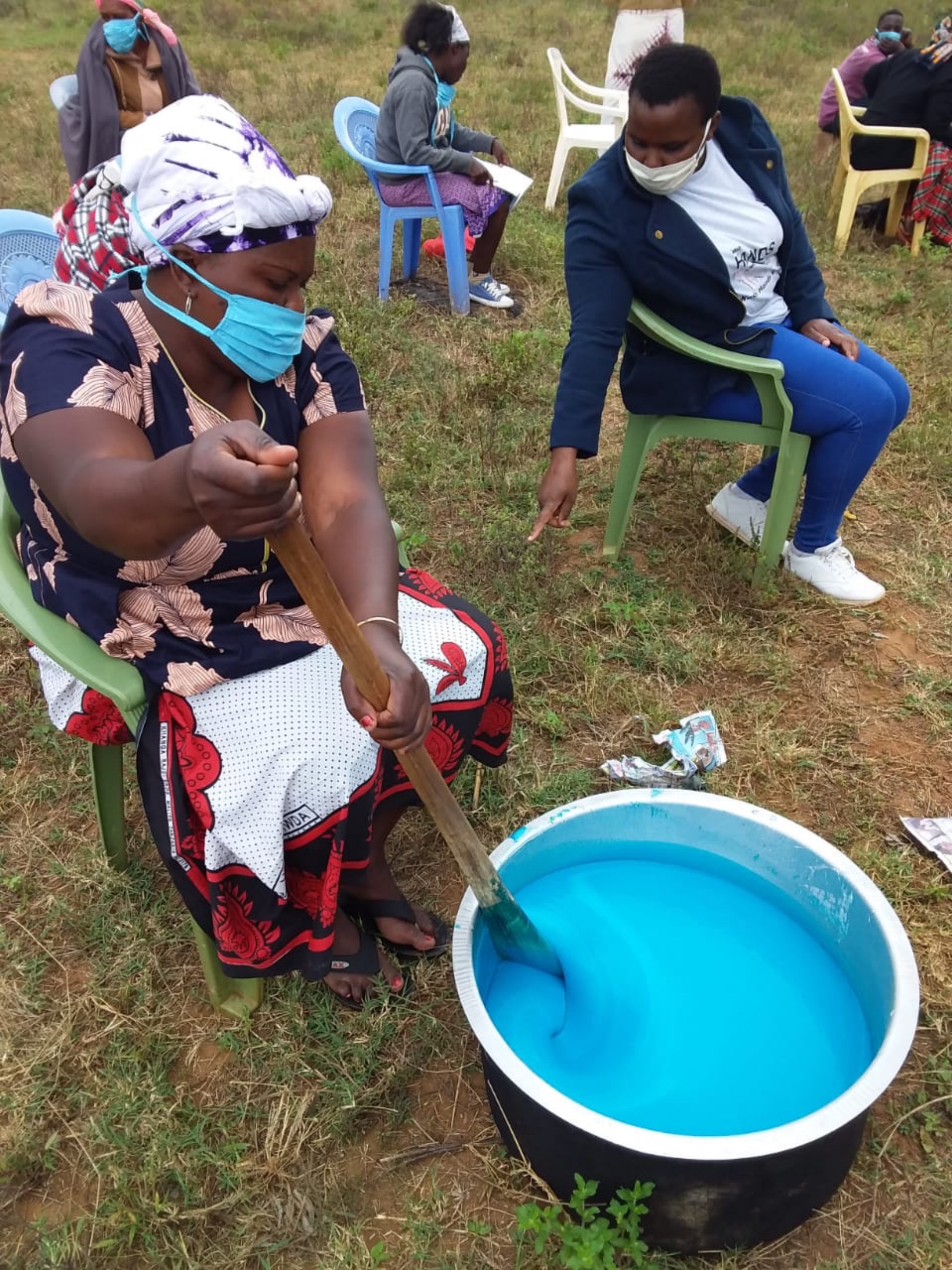
A community member mixes soap.
Water and soap are the key ingredients to clean hands. The lack of access to basic handwashing facilities (soap and water) is a significant issue in low-income countries. Some 818 million children lack basic handwashing facilities at their schools, said the World Health Organization in August. In all, some 3 billion people worldwide do not have a place in their homes to wash their hands with soap and water.
Increasing handwashing could prevent up to 165,000 deaths from diarrheal disease each year. That is a massive impact!
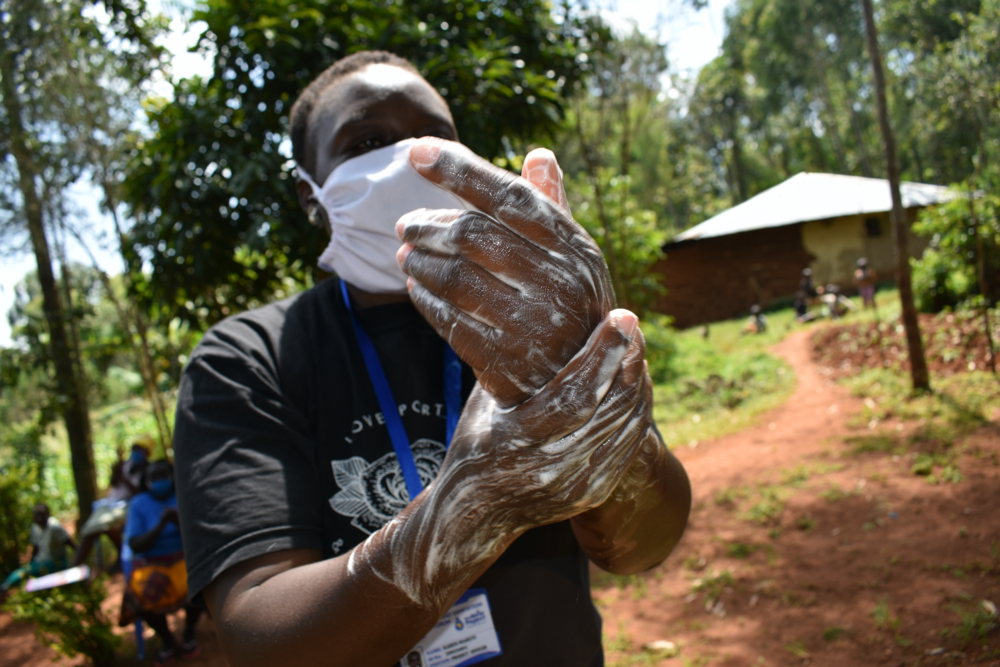
Lathering up with soap for handwashing.
“The COVID-19 pandemic has exposed an uncomfortable truth: too many people around the world cannot clean their hands. But we can help reduce the spread, and we can prevent future infectious diseases from following a similar path. It starts by making sure everyone, everywhere, has access to basic hand hygiene facilities with soap and clean water,” said the UN Children’s Fund (UNICEF).
The arrival of a global pandemic makes the fact that so many children and families cannot wash their hands with soap even more critical. The Water Project has adapted in the face of the pandemic, but hand hygiene has always been a core part of our work. We hold hygiene and sanitation training at each of our water points, and handwashing is one of the critical things we promote. When COVID-19 reached Kenya, Sierra Leone, and Uganda, our teams were already busy re-training communities on measures to prevent the spread of the virus – including handwashing with soap.
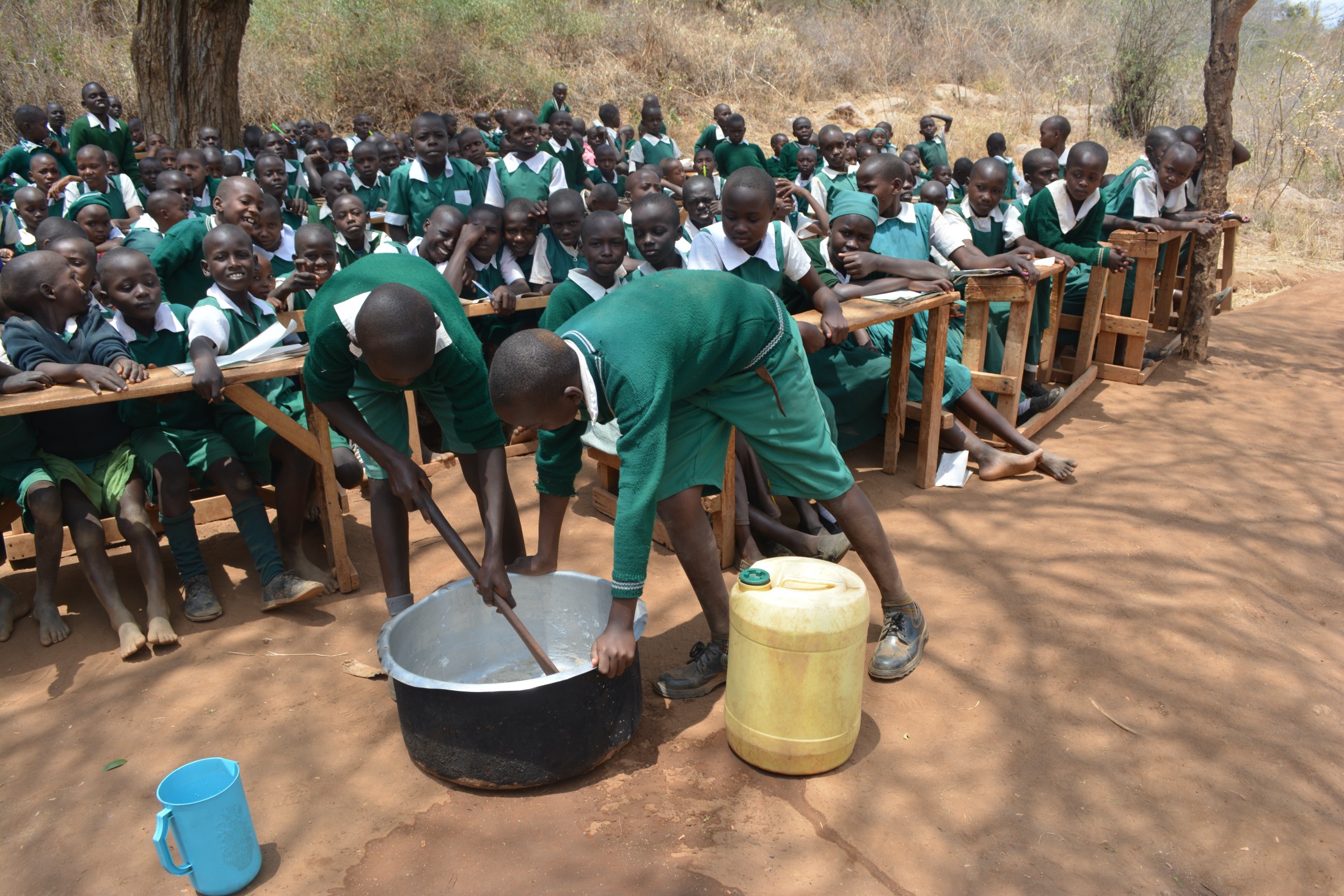
Students participate in soapmaking, before physical distancing.
In Southeast Kenya, our teams include soapmaking as a part of their sanitation and hygiene training. We enable access to soap for handwashing and provide a new skill that can help some entrepreneurial people make a little extra money.
Soapmaking is one of our most popular training topics – particularly with students. Our teams bring the materials to make the soap and lead a hands-on demonstration to make a batch of soap. The students love to join in and help mix all of the ingredients to make the soap. In some cases, they compete to see who can stir the thick liquid the quickest.
Community members are also often interested in taking a turn during their training. But they are keen to make soap when they get home. When we revisit communities, we often hear from people about making soap on their own.
“The presence of water has brought a sense of security in my life where I feel I can work hard to provide for my family. I have also been making soap since the sanitation and hygiene training,” said Virginia Muia, a 34-year-old farmer in Kakuswi, Kenya, during a recent visit to the project that was constructed in her community last year.
“I have been selling [the soap] to other community members. By God’s grace, I plan to use the profits to embark on agribusiness whereby I can farm watermelons, green peppers, and tomatoes on a large scale.”
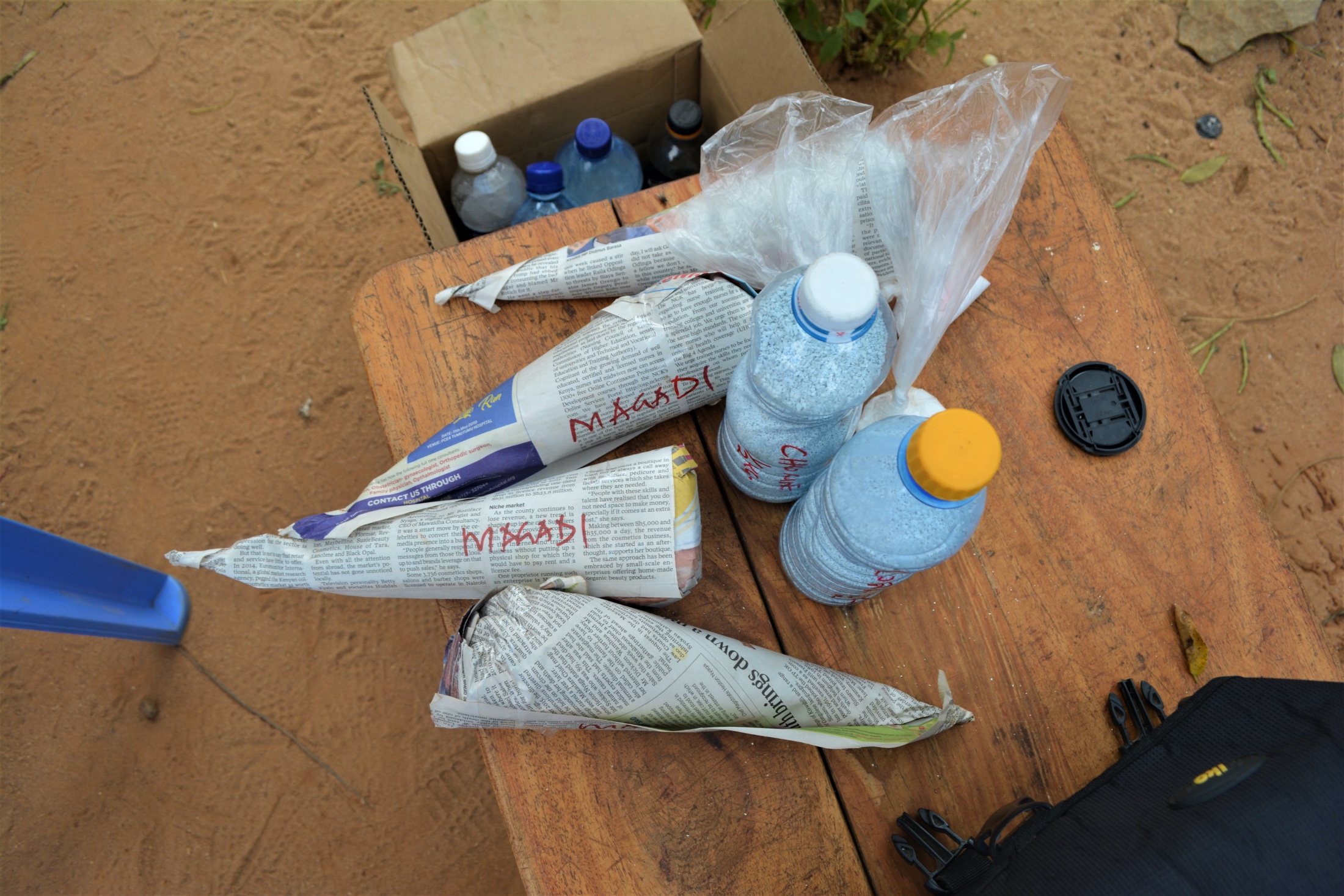
Soapmaking supplies.
For Josephine Wambua in Kathonzweni Community, Kenya, her reasons for making soap are to be more comfortable and to save money.
“We were trained on soapmaking, which has been helpful as I make soap to clean the house, wash the dishes, and bathe, among other uses, thus sparing the money we initially used for purchasing soap,” she said.
It turns out, making soap is not too hard. In all, the process takes 2-2½ hours to complete. So, we asked some of our expert team members from Southeast Kenya to demonstrate how it is done. Watch the step-by-step process led by Christine Lucas and Winnie Nthenya, and read all of the steps below.
The following is the procedure our team uses to make 20 liters of soap:
- Mix 1 kilogram of industrial salt and 1 liter of ungerol (fatty alcohol ether sulfates) in a large basin.
- Stir in 1 direction for 15 minutes until the salt particles integrate entirely and the composition gets milky.
- Add 4 liters of water as you stir for 15 minutes, mixing it carefully step-by-step with a cup.
- Stir the mixture until all bubbles are no longer visible.
- Carefully add ½ liter of sulphonic acid.
- Stir continuously until all the lumps have dissolved.
- After approximately 20 minutes of stirring, add another 4 liters of water and keep stirring until all the bubbles are gone.
- Add 10 grams of caustic soda (sodium hydroxide) and another 4 liters of water.
- Keep stirring.
- After 15 minutes, add dye, foam booster, and preservatives (optional) to the mixture. Note: Do not add too much color as it will affect the color of the hands after washing!
- Keep stirring and add another 4 liters of water.
- 15 minutes later, add perfume (optional).
- Add 8 liters of water.
- Stir until all the bubbles are completely gone.
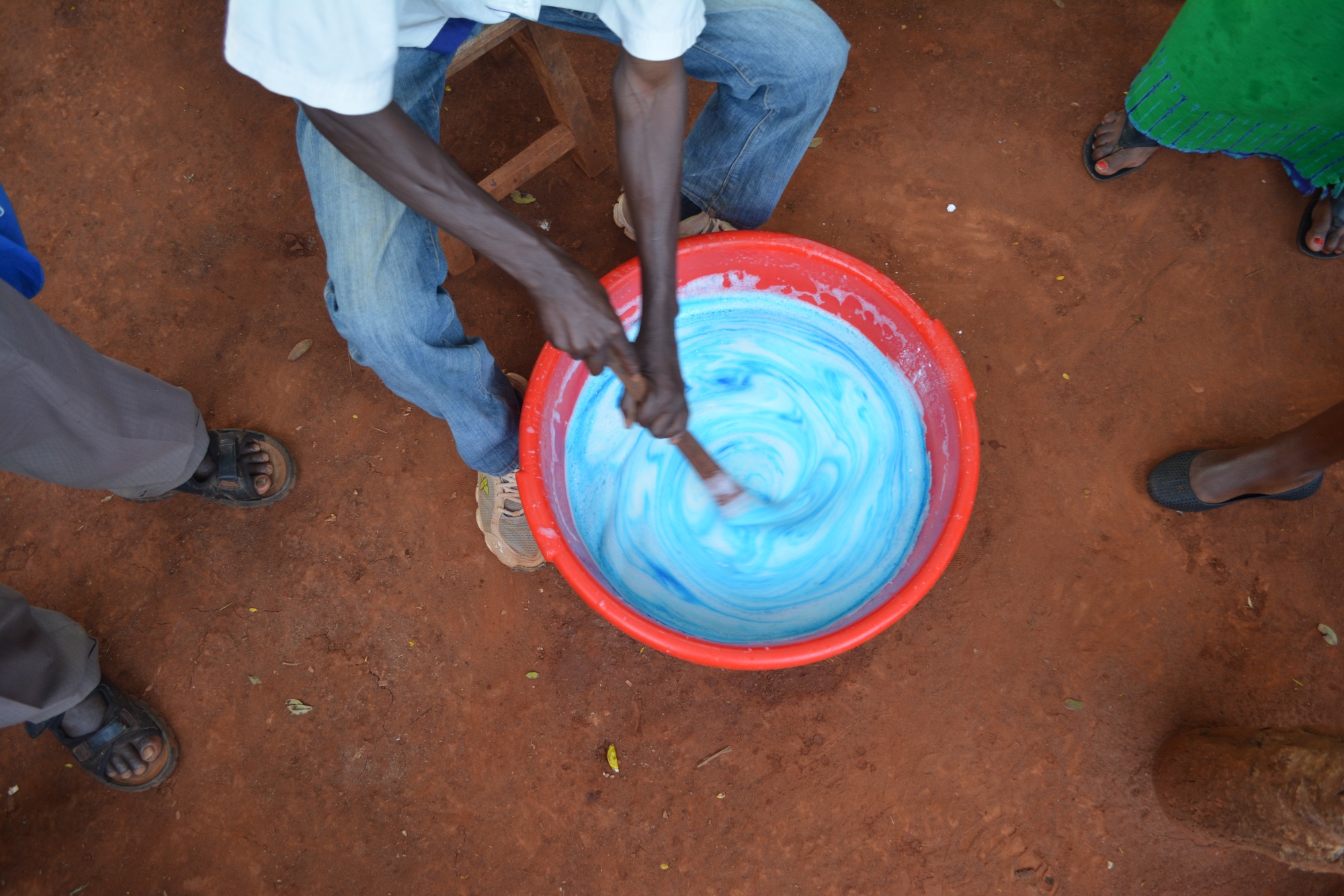
Mixing the soap, before physical distancing.
Soap is not the only cleaning agent people learn to make. We also go over how to properly dilute Kerol, a strong disinfectant available at local shops. And finally, we demonstrate how to mix jik, a common name for bleach.
The following is the procedure used to make 20 liters of jik (bleach):
- Mix ½ kilogram of chlorine with 1 kiloggram of soda ash and 20 grams of caustic soda.
- Add 20 liters of water and stir for 15 minutes.
- Cover and leave it to settle in a closed lid for 30 minutes.
- Decant to separate jik liquid from the residue.
- Uses as needed.
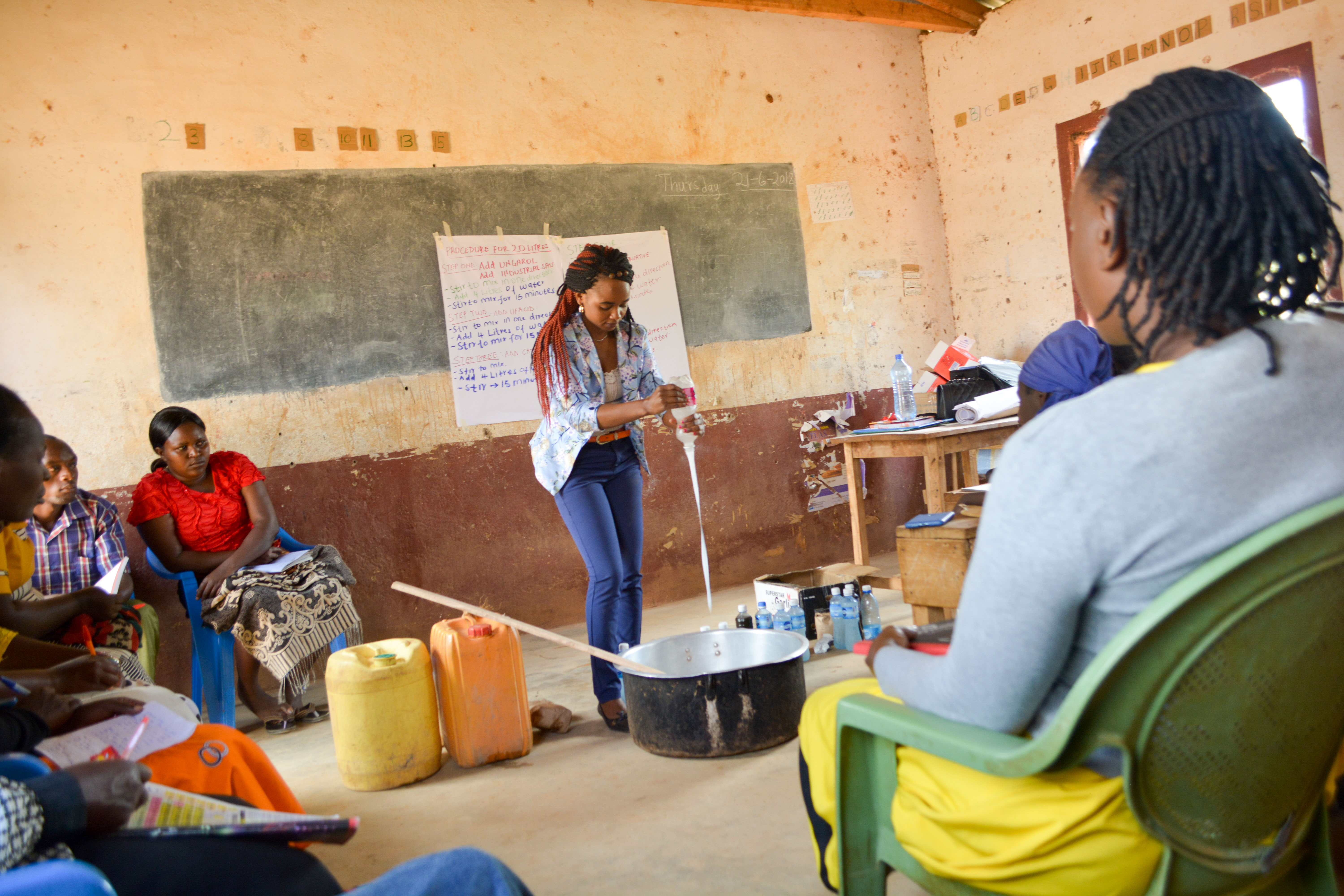
Trainer Christine demonstrates how to make soap, before physical distancing.
Tweet